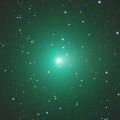
|
It brightened rapidly. Now it is very bright as 8.0 mag (Oct. 26, Osamu Miyazaki). It stays observable at 8 mag in excellent condition from October to November.
Date(TT) R.A. (2000) Decl. Delta r Elong. m1 Best Time(A, h)
Oct. 31 5 16.13 -12 49.9 0.385 1.271 129 8.0 2:38 (180, 68)
Nov. 7 5 22.47 -4 57.6 0.366 1.282 136 7.9 2:17 (180, 60)
|

|
It brightened rapidly. Now it is very bright as 9.9 mag (Oct. 25, Marco Goiato). It will approach to Sun down to 0.4 a.u. on Dec. 13, and it is expected to brighten up to 6 mag. It stays observable while the comet is brightening until late November when it brightens up to 7 mag.
Date(TT) R.A. (2000) Decl. Delta r Elong. m1 Best Time(A, h)
Oct. 31 10 22.11 -7 19.1 1.201 1.097 59 9.8 3:26 (261, 25)
Nov. 7 11 5.69 -11 43.5 1.114 0.966 54 9.1 3:17 (269, 23)
|

|
Now it is 8.6 mag (Oct. 20, Seiichi Yoshida). It stays bright as 8-9 mag until early November. It will be observable in excellent condition in the Southern Hemisphere. It locates very low in the Northern Hemisphere.
Date(TT) R.A. (2000) Decl. Delta r Elong. m1 Best Time(A, h)
Oct. 31 18 44.80 -26 58.1 1.558 1.405 62 9.1 20:01 ( 82, 40)
Nov. 7 19 12.20 -26 19.5 1.605 1.428 61 9.3 20:11 ( 82, 38)
|
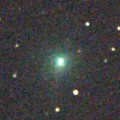
|
Now it is 12.5 mag (Oct. 28, Michael Jager). In the Northern Hemisphere, appearing in the morning sky. It stasy observable after this while the comet will be fading rapidly. In the Southern Hemipshere, it will never be observable again.
Date(TT) R.A. (2000) Decl. Delta r Elong. m1 Best Time(A, h)
Oct. 31 13 31.66 9 4.3 1.030 0.461 26 10.7 3:26 (275,-23)
Nov. 7 13 56.43 9 53.3 1.218 0.599 29 12.2 3:17 (275,-25)
|

|
Brightened rapidly. Now it is very bright as 11.0 mag (Oct. 23, Marco Goiato). It is observable at 11-12 mag in excellent condition from October to November.
Date(TT) R.A. (2000) Decl. Delta r Elong. m1 Best Time(A, h)
Oct. 31 23 31.91 -15 36.3 0.484 1.349 128 11.4 20:52 (180, 70)
Nov. 7 23 34.91 -10 2.3 0.495 1.339 125 11.2 20:27 (180, 65)
|

|
It approached to Sun down to 0.29 a.u. on July 3, and it brightened up to 0.6 mag (Alan Hale). Now it is fading. It has faded down to 11.3 mag in September (Sept. 27, Mitsunori Tsumura). Now it is not observable. It will appear in the morning sky at 14 mag.
Date(TT) R.A. (2000) Decl. Delta r Elong. m1 Best Time(A, h)
Oct. 31 15 36.33 -17 14.5 3.327 2.404 18 12.4 20:01 ( 67, -3)
Nov. 7 15 43.10 -18 7.5 3.462 2.506 13 12.7 20:11 ( 61, -8)
|

|
Now it is 11.2 mag (Sept. 11, Carlos Labordena). Now it is not observable. It will appear in the morning sky at 13.5 mag.
Date(TT) R.A. (2000) Decl. Delta r Elong. m1 Best Time(A, h)
Oct. 31 15 34.47 -15 19.3 3.721 2.792 17 12.5 20:01 ( 68, -4)
Nov. 7 15 43.73 -16 51.4 3.814 2.858 13 12.6 20:11 ( 62, -8)
|

|
It brightened up to 13.5 mag in summer (July 31, Ken-ichi Kadota). Now it is not observable. It is expected to brighten up to 12 mag from autumn to winter. In the Southern Hemisphere, it will appear in the morning sky in December, then it stays observable in good condition. In the Northern Hemisphere, it will be observable in the extremely low sky only from November to December.
Date(TT) R.A. (2000) Decl. Delta r Elong. m1 Best Time(A, h)
Oct. 31 13 26.42 -4 49.2 2.685 1.755 16 12.9 3:26 (286,-14)
Nov. 7 13 33.18 -8 23.1 2.632 1.736 20 12.8 3:17 (287, -9)
|

|
Now it is 14.6 mag (Oct. 25, Toshihiko Ikemura, Hirohisa Sato).
Date(TT) R.A. (2000) Decl. Delta r Elong. m1 Best Time(A, h)
Oct. 31 2 35.17 27 2.6 4.863 5.834 166 13.2 23:54 (180, 28)
Nov. 7 2 31.62 26 47.2 4.860 5.835 168 13.2 23:23 (180, 28)
|

|
First return of a new periodic comet which brightened up to 13 mag in 2009. Now it is 14.7 mag (Oct. 19, Thomas Lehmann). It is expected to brighten up to 12 mag and to be observable in excellent condition in winter.
Date(TT) R.A. (2000) Decl. Delta r Elong. m1 Best Time(A, h)
Oct. 31 4 9.59 -10 52.3 0.532 1.455 143 13.9 1:32 (180, 66)
Nov. 7 4 14.25 -12 5.1 0.493 1.422 144 13.5 1:09 (180, 67)
|
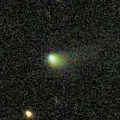
|
Now it is 15.3 mag (Sept. 12, SONEAR Observatory, Oliveira). It stays 13-14 mag from 2020 to 2021. It is not observable until January.
Date(TT) R.A. (2000) Decl. Delta r Elong. m1 Best Time(A, h)
Oct. 31 15 4.29 -11 12.0 3.900 2.930 10 14.4 20:01 ( 66,-12)
Nov. 7 15 15.33 -12 16.2 3.902 2.923 7 14.4 20:11 ( 61,-16)
|
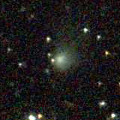
|
Now it is 14.8 mag (Oct. 18, Toshihiko Ikemura, Hirohisa Sato). It is expected to be observable at 5-6 mag for a long time from 2022 to 2023. In the Northern Hemisphere, it is not observable at the high light from 2022 summer to 2023 summer. In the Southern Hemisphere, it is only visible in the extremely low sky in summer in 2020. But it will be observable in good condition at the high light.
Date(TT) R.A. (2000) Decl. Delta r Elong. m1 Best Time(A, h)
Oct. 31 17 17.14 39 3.3 8.249 7.915 67 14.6 20:01 (127,-15)
Nov. 7 17 20.48 38 20.4 8.228 7.862 65 14.5 20:11 (123,-20)
|
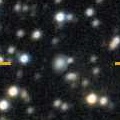
|
Now it is 13.7 mag (Oct. 18, Toshihiko Ikemura, Hirohisa Sato). It will brighten up to 12 mag in winter in 2022. In the Northern Hemisphere, it stays observable in good condition for a long time. In the Southern Hemisphere, it is not observable until 2021 November.
Date(TT) R.A. (2000) Decl. Delta r Elong. m1 Best Time(A, h)
Oct. 31 0 3.17 64 43.1 4.597 5.220 124 14.7 21:22 (180,-10)
Nov. 7 23 59.12 64 4.0 4.556 5.178 124 14.6 20:51 (180, -9)
|

|
It brightened up to 11.3 mag in September (Sept. 12, Carlos Labordena). Now it is fading rapidly. It has already faded down to 16.6 mag (Oct. 11, Katsumi Yoshimoto). It stays observable in excellent condition in the Northern Hemipshere. It becomes observable in low sky from October to November also in the Southern Hemipshere.
Date(TT) R.A. (2000) Decl. Delta r Elong. m1 Best Time(A, h)
Oct. 31 19 48.16 21 33.5 1.452 1.725 87 14.7 20:01 (137, 20)
Nov. 7 19 46.24 17 47.3 1.658 1.788 80 15.1 20:11 (127, 17)
|
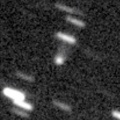
|
Now it is 16.1 mag (Sept. 3, Blue Mountains Observatory, Leura). It will brighten up to 13 mag in 2021. In the Southern Hemisphere, it becomes too low to observe temporarily from mid October to mid December. In the Northern Hemisphere, it is not observable until July in 2022.
Date(TT) R.A. (2000) Decl. Delta r Elong. m1 Best Time(A, h)
Oct. 31 14 56.37 -35 40.2 5.063 4.167 22 14.7 20:01 ( 47, 2)
Nov. 7 15 4.41 -36 46.8 5.048 4.137 20 14.7 20:11 ( 42, -1)
|
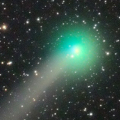
|
It brightened up to 6.0 mag in June (June 13, Marco Goiato). Now it is fading. It has already faded down to 14.5 mag (Oct. 18, Toshihiko Ikemura, Hirohisa Sato). It stays observable in good condition for a long time after this.
Date(TT) R.A. (2000) Decl. Delta r Elong. m1 Best Time(A, h)
Oct. 31 17 30.45 23 9.1 2.652 2.310 59 14.8 20:01 (116, -4)
Nov. 7 17 44.79 23 16.6 2.763 2.397 58 15.1 20:11 (113, -8)
|

|
Now it is 14.0 mag (Oct. 20, Toshihiko Ikemura, Hirohisa Sato). It stays 14 mag until autumn. In the Southern Hemisphere, it will never be observable again.
Date(TT) R.A. (2000) Decl. Delta r Elong. m1 Best Time(A, h)
Oct. 31 15 15.07 62 59.5 4.667 4.561 77 15.1 20:01 (146,-40)
Nov. 7 15 24.42 62 5.0 4.697 4.606 78 15.1 20:11 (145,-44)
|
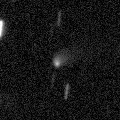
|
Now it is 14.6 mag (Oct. 5, Taras Prystavski). It stays 14-15 mag until 2021. In the Southern Hemisphere, it stays observable in good condition for a long time. In the Northern Hemisphere, it is not observable until June in 2021.
Date(TT) R.A. (2000) Decl. Delta r Elong. m1 Best Time(A, h)
Oct. 31 18 30.65 -67 17.6 4.790 4.487 66 15.2 20:01 ( 28, 43)
Nov. 7 18 47.24 -66 7.2 4.833 4.472 63 15.2 20:11 ( 30, 41)
|
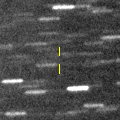
|
It will brighten very rapidly, and will brighten up to 11 mag from December to January. It stays observable for a long time. In the Southern Hemipshere, it locates low until the high light.
Date(TT) R.A. (2000) Decl. Delta r Elong. m1 Best Time(A, h)
Oct. 31 18 22.38 -10 41.1 1.196 1.088 58 15.9 20:01 ( 96, 27)
Nov. 7 18 41.28 -10 42.0 1.147 1.021 56 15.3 20:11 ( 93, 23)
|

|
Now it is 15.5 mag (Oct. 19, Martin Masek). It will brighten up to 13.5 mag in spring in 2021. In the Southern Hemisphere, it stays observable in good condition for a long time. In the Northern Hemisphere, it is not observable until spring in 2021.
Date(TT) R.A. (2000) Decl. Delta r Elong. m1 Best Time(A, h)
Oct. 31 17 15.26 -48 36.7 4.274 3.708 49 15.3 20:01 ( 50, 31)
Nov. 7 17 17.10 -47 36.8 4.334 3.681 43 15.3 20:11 ( 48, 25)
|
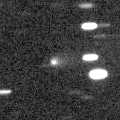
|
Now it is 15.7 mag (Oct. 20, Giuseppe Pappa). It stays 15.5 mag until winter, and observable in good condition. It locates somewhat low in the Southern Hemisphere.
Date(TT) R.A. (2000) Decl. Delta r Elong. m1 Best Time(A, h)
Oct. 31 8 26.54 17 32.1 1.889 2.180 93 15.4 3:26 (219, 28)
Nov. 7 8 32.85 17 27.6 1.840 2.216 98 15.4 3:17 (216, 29)
|
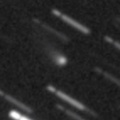
|
Now it is 16.2 mag (Oct. 18, Toshihiko Ikemura, Hirohisa Sato). It will stay at 14 mag for a long time from 2021 to 2022. In the Northern Hemisphere, it stays observable in good condition while brightening gradually. In the Southern Hemisphere, it stays locating low for a long time.
Date(TT) R.A. (2000) Decl. Delta r Elong. m1 Best Time(A, h)
Oct. 31 17 33.34 11 52.8 6.249 5.724 54 15.6 20:01 (107, 4)
Nov. 7 17 35.67 10 50.9 6.296 5.699 49 15.6 20:11 (101, -3)
|
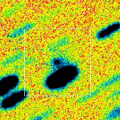
|
Now it is 16.5 mag (Oct. 9, ATLAS-MLO, Mauna Loa). It brightens up to 15 mag in winter. But it is not observable at high light. In the Southern Hemisphere, it stays observable in good condition until autumn when the comet will brighten up to 16 mag. It stays locating very low in the Northern Hemisphere.
Date(TT) R.A. (2000) Decl. Delta r Elong. m1 Best Time(A, h)
Oct. 31 19 12.44 -27 33.8 2.418 2.251 68 15.7 20:01 ( 85, 45)
Nov. 7 19 24.85 -26 20.9 2.475 2.231 64 15.7 20:11 ( 83, 40)
|
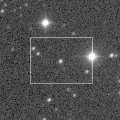
|
Now it is 15.2 mag (Oct. 16, R. Carstens). It stays 16 mag until winter. In the Southern Hemisphere, it is observable in excellent condition. It will be getting higher graually after this also in the Northern Hemisphere.
Date(TT) R.A. (2000) Decl. Delta r Elong. m1 Best Time(A, h)
Oct. 31 21 28.14 -39 50.2 0.875 1.360 93 15.8 20:01 ( 68, 75)
Nov. 7 21 41.25 -34 34.1 0.879 1.337 91 15.8 20:11 ( 86, 70)
|

|
Now it is 18.6 mag (Aug. 6, Palomar Mountain--ZTF). It will approach to Sun down to 0.14 a.u. on Dec. 7, and will brighten up to 11 mag. But it is not observable at the high light. It is observable until November when it brightens up to 16 mag.
Date(TT) R.A. (2000) Decl. Delta r Elong. m1 Best Time(A, h)
Oct. 31 10 14.12 12 30.2 0.751 0.981 66 16.0 3:26 (243, 14)
Nov. 7 11 9.16 4 47.3 0.668 0.856 58 15.9 3:17 (255, 12)
|

|
Now it is 16.2 mag (Oct. 11, Toshihiko Ikemura, Hirohisa Sato). It will brighten up to 14.5 mag from spring to summer in 2021. In the Southern Hemisphere, it stays observable in excellent condition for a long time. In the Northern Hemisphere, it is observable in good condition in 2020, however, it will be unobservable in 2021.
Date(TT) R.A. (2000) Decl. Delta r Elong. m1 Best Time(A, h)
Oct. 31 21 17.59 -26 35.0 2.943 3.200 95 15.9 20:01 (109, 70)
Nov. 7 21 14.99 -27 53.8 3.037 3.161 87 15.9 20:11 ( 97, 63)
|
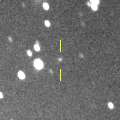
|
Now it is 15.7 mag (Oct. 24, Toshihiko Ikemura, Hirohisa Sato). It is expected to brighten up to 13 mag in 2022. In 2020, it is observable in excellent condition in the Southern Hemisphere. In the Northern Hemisphere, it is observable from autumn to winter, but it locating extremely low.
Date(TT) R.A. (2000) Decl. Delta r Elong. m1 Best Time(A, h)
Oct. 31 8 28.33 -34 20.6 6.404 6.321 80 16.0 3:26 (279, 60)
Nov. 7 8 30.36 -35 10.8 6.301 6.282 84 16.0 3:17 (280, 64)
|
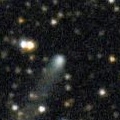
|
Now it is 15.8 mag (Oct. 20, Toshihiko Ikemura, Hirohisa Sato). It stays 15-16 mag for a long time until 2021.
Date(TT) R.A. (2000) Decl. Delta r Elong. m1 Best Time(A, h)
Oct. 31 18 26.27 18 56.1 4.876 4.609 68 16.1 20:01 (121, 9)
Nov. 7 18 27.76 18 57.9 4.967 4.623 64 16.1 20:11 (115, 3)
|
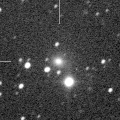
|
It brightened up to 13.5 mag in winter (Dec. 6, Chris Wyatt). Now it is fading slowly. Now it is 15.6 mag (Oct. 17, Martin Masek). In the Southern Hemisphere, it stays observable for a long time. It locates somewhat low in the Northern Hemisphere. Taras Prystavski found its fragmentation on Sept. 12.
Date(TT) R.A. (2000) Decl. Delta r Elong. m1 Best Time(A, h)
Oct. 31 1 58.01 -36 13.7 3.867 4.562 129 16.1 23:16 ( 0, 89)
Nov. 7 1 49.27 -35 17.7 3.943 4.602 126 16.2 22:40 ( 0, 90)
|
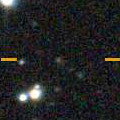
|
Now it is 16.8 mag (Oct. 20, Giuseppe Pappa). It will brighten up to 13.5 mag from winter to spring in 2021. In the Northern Hemisphere, it stays observable in excellent condition. In the Southern Hemisphere, it stays extremely low until 2021 spring.
Date(TT) R.A. (2000) Decl. Delta r Elong. m1 Best Time(A, h)
Oct. 31 23 31.31 48 45.0 1.505 2.282 130 16.5 20:50 (180, 6)
Nov. 7 23 26.17 47 25.0 1.455 2.209 128 16.3 20:18 (180, 8)
|
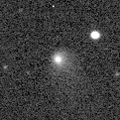
|
It brightened up to 13.8 mag in autumn in 2019 (Sept. 3, Chris Wyatt). Now it is fading slowly. Now it is 15.7 mag (Oct. 19, Thomas Lehmann). In 2020, it stays observable in good condition while the comet will be fading from 16 to 17 mag.
Date(TT) R.A. (2000) Decl. Delta r Elong. m1 Best Time(A, h)
Oct. 31 23 49.92 2 6.8 5.737 6.535 140 16.3 21:09 (180, 53)
Nov. 7 23 47.40 2 14.4 5.860 6.578 133 16.4 20:39 (180, 53)
|
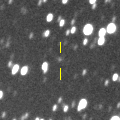
|
Now it is 16.4 mag (Oct. 20, Toshihiko Ikemura, Hirohisa Sato). It is observable at 16.5-17 mag from 2020 to 2021. In the Southern Hemisphere, it is not observable until summer in 2021.
Date(TT) R.A. (2000) Decl. Delta r Elong. m1 Best Time(A, h)
Oct. 31 22 14.21 65 11.7 5.530 6.009 114 16.5 20:01 (177,-10)
Nov. 7 22 9.21 63 18.7 5.539 6.002 113 16.5 20:11 (172, -9)
|

|
Now it is 16.3 mag (Oct. 17, ATLAS-MLO, Mauna Loa). It is observable at 15-16 mag in 2020. It is observable in excellent condition in the Southern Hemisphere. It locates somewhat low in the Northern Hemisphere.
Date(TT) R.A. (2000) Decl. Delta r Elong. m1 Best Time(A, h)
Oct. 31 18 0.29 -23 37.8 7.563 7.000 52 16.5 20:01 ( 80, 29)
Nov. 7 18 1.41 -23 20.9 7.677 7.019 45 16.5 20:11 ( 76, 22)
|

|
It was expected to brighten very rapidly, and brighten up to 14.5 mag from August to September. However, its current brightness is very uncertain. It could not be detected as fainter than 18.0 mag on June 30 (Charles S. Morris), and fainter than 15.7 mag on July 13 (Sandor Szabo). However, Giuseppe Pappa reported as 14 mag on July 10, and Thomas Lehmann reported it is bright as 15.2 mag on July 12. In the Northern Hemisphere, it stays observable for a long time. It is getting higher gradually after this also in the Southern Hemisphere.
Date(TT) R.A. (2000) Decl. Delta r Elong. m1 Best Time(A, h)
Oct. 31 10 49.44 0 29.3 1.743 1.418 54 16.7 3:26 (259, 15)
Nov. 7 10 47.39 -3 59.2 1.717 1.502 60 16.9 3:17 (259, 22)
|
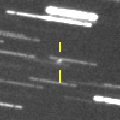
|
First return of a new periodic comet which brightened up to 17 mag in 2013. Now it is 17.7 mag (Oct. 26, Toshihiko Ikemura, Hirohisa Sato). It will brighten up to 16 mag and will be observable in good condition in winter. In the Southern Hemisphere, it locates low until December.
Date(TT) R.A. (2000) Decl. Delta r Elong. m1 Best Time(A, h)
Oct. 31 7 32.70 39 21.8 0.628 1.331 108 17.2 3:26 (197, 13)
Nov. 7 8 13.44 39 41.6 0.577 1.285 107 16.9 3:17 (201, 11)
|
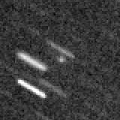
|
Now it is 17.6 mag (Oct. 17, ATLAS-MLO, Mauna Loa). It will approach to Earth down to 0.46 a.u. in 2021 April, and it is expected to brighten up to 12.5 mag and to be observable in excellent condition.
Date(TT) R.A. (2000) Decl. Delta r Elong. m1 Best Time(A, h)
Oct. 31 23 37.71 -21 7.8 1.393 2.139 126 17.0 20:55 (180, 76)
Nov. 7 23 7.71 -22 6.8 1.448 2.056 113 16.9 20:11 (167, 77)
|
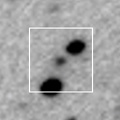
|
Now it is 16.4 mag (Oct. 24, Mitsunori Tsumura). It will approach to Earth down to 0.5 a.u. in November, and it is observable in excellent condition.
Date(TT) R.A. (2000) Decl. Delta r Elong. m1 Best Time(A, h)
Oct. 31 23 48.17 22 47.5 0.495 1.419 142 17.0 21:08 (180, 32)
Nov. 7 23 58.96 19 59.3 0.495 1.405 139 17.0 20:52 (180, 35)
|

|
First return of a new periodic comet which brightened up to 17.5 mag in 2012. Now it is 16.8 mag (Oct. 11, ATLAS-MLO, Mauna Loa). It stays observable at 17 mag in good condition from summer to winter. It locates somewhat low in the Southern Hemisphere.
Date(TT) R.A. (2000) Decl. Delta r Elong. m1 Best Time(A, h)
Oct. 31 5 18.82 36 48.6 1.668 2.468 134 17.0 2:42 (180, 18)
Nov. 7 5 15.95 37 28.6 1.635 2.487 141 17.0 2:11 (180, 18)
|
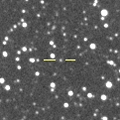
|
Now it is 16.6 mag (Oct. 12, Toshihiko Ikemura, Hirohisa Sato). It stays at 17 mag from 2020 to 2021.
Date(TT) R.A. (2000) Decl. Delta r Elong. m1 Best Time(A, h)
Oct. 31 18 56.81 29 43.4 8.979 8.851 79 17.1 20:01 (133, 6)
Nov. 7 18 58.01 29 33.4 9.044 8.847 75 17.1 20:11 (128, 1)
|
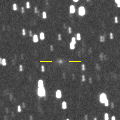
|
Now it is 17.2 mag (Oct. 20, Toshihiko Ikemura, Hirohisa Sato). It will be fading after this, and will be fainter than 18 mag in December.
Date(TT) R.A. (2000) Decl. Delta r Elong. m1 Best Time(A, h)
Oct. 31 21 2.60 0 58.2 1.770 2.177 100 17.1 20:01 (142, 47)
Nov. 7 21 13.33 0 15.7 1.851 2.187 95 17.2 20:11 (134, 44)
|
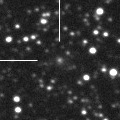
|
It brightened up to 14.6 mag in summer (July 18, Thomas Lehmann). Now it is 17.0 mag (Oct. 12, Toshihiko Ikemura, Hirohisa Sato). It stays observable until December when it becomes fainter than 18 mag.
Date(TT) R.A. (2000) Decl. Delta r Elong. m1 Best Time(A, h)
Oct. 31 20 33.40 -13 41.7 1.978 2.206 89 17.1 20:01 (119, 54)
Nov. 7 20 45.58 -13 37.6 2.076 2.227 85 17.3 20:11 (112, 50)
|
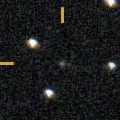
|
Now it is 17.8 mag (Oct. 11, ATLAS-MLO, Mauna Loa). It is observable at 17-18 mag for a long time from late 2019 to early 2021. It will fade out before it passes the perihelion.
Date(TT) R.A. (2000) Decl. Delta r Elong. m1 Best Time(A, h)
Oct. 31 6 2.06 16 40.5 3.887 4.553 126 17.4 3:25 (180, 38)
Nov. 7 6 0.74 16 46.6 3.796 4.543 134 17.4 2:56 (180, 38)
|
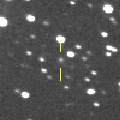
|
Now it is 17.8 mag (Oct. 20, Toshihiko Ikemura, Hirohisa Sato). It will brighten up to 17 mag in December. It is observable in good condition. It locates somewhat low in the Southern Hemisphere.
Date(TT) R.A. (2000) Decl. Delta r Elong. m1 Best Time(A, h)
Oct. 31 2 24.63 42 23.5 1.046 1.977 151 17.7 23:44 (180, 13)
Nov. 7 2 20.81 41 24.6 1.021 1.961 154 17.5 23:12 (180, 14)
|

|
It brightened up to 15.0-15.5 mag in September (Sept. 19, Michael Jager). Now it is fading. It has already faded down to 17.3 mag (Oct. 20, Toshihiko Ikemura, Hirohisa Sato). It will be fainter than 18 mag in November. It is observable in good condition in the Northern Hemisphere. It locates low in the Southern Hemisphere.
Date(TT) R.A. (2000) Decl. Delta r Elong. m1 Best Time(A, h)
Oct. 31 9 8.42 18 19.9 1.312 1.555 83 17.6 3:26 (227, 21)
Nov. 7 9 19.91 17 44.6 1.294 1.601 87 17.9 3:17 (226, 23)
|

|
It brightened up to 7.7 mag in June in 2018 (June 19, Juan Jose Gonzalez). Now it is fading. It has already faded down to 18.8 mag (Oct. 23, Toshihiko Ikemura, Hirohisa Sato).
Date(TT) R.A. (2000) Decl. Delta r Elong. m1 Best Time(A, h)
Oct. 31 6 34.98 -12 48.7 7.529 7.950 111 17.6 3:26 (200, 67)
Nov. 7 6 32.66 -12 58.6 7.495 8.002 117 17.6 3:17 (187, 68)
|
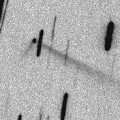
|
Now it is 17.5 mag (Aug. 15, Toshihiko Ikemura, Hirohisa Sato). Main-belt asteroid. But it showed a straight tail like a comet in 2019. In 2020, it brightens up to 16.5 mag and stays observable in good condition from September to October.
Date(TT) R.A. (2000) Decl. Delta r Elong. m1 Best Time(A, h)
Oct. 31 23 59.35 -6 51.4 1.512 2.353 138 17.6 21:19 (180, 62)
Nov. 7 23 58.61 -7 46.7 1.593 2.368 131 17.8 20:51 (180, 63)
|

|
Now it is 17.1 mag (Oct. 9, D. Buczynski). It stays 15-16 mag for a long time from 2021 spring to 2022 spring. It stays observable for a long time in the Northern Hemisphere. In the Southern Hemipsphere, it is not observable until the end of 2021.
Date(TT) R.A. (2000) Decl. Delta r Elong. m1 Best Time(A, h)
Oct. 31 19 28.75 48 16.3 3.963 4.118 91 17.7 20:01 (150, -4)
Nov. 7 19 26.42 47 13.7 3.977 4.075 88 17.6 20:11 (144, -7)
|

|
Now it is 18.8 mag (Oct. 17, Slooh.com Chile Observatory, La Dehesa). It stays observable at 17-18 mag for a long time until 2027. In the Southern Hemipshere, it stays observable in good condition for a long time. It is not observable in the Northern Hemipsphere.
Date(TT) R.A. (2000) Decl. Delta r Elong. m1 Best Time(A, h)
Oct. 31 10 7.27 -49 5.3 12.299 11.868 62 17.7 3:26 (307, 44)
Nov. 7 10 7.80 -49 47.4 12.235 11.850 65 17.7 3:17 (308, 47)
|
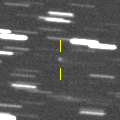
|
Now it is 17.2 mag (Oct. 23, Toshihiko Ikemura, Hirohisa Sato). It stays observable at 17.5-18 mag in good condition until winter.
Date(TT) R.A. (2000) Decl. Delta r Elong. m1 Best Time(A, h)
Oct. 31 7 43.09 17 19.2 1.626 2.089 103 17.8 3:26 (209, 33)
Nov. 7 7 48.86 17 33.2 1.575 2.115 108 17.7 3:17 (205, 34)
|

|
Now it is 18.1 mag (Oct. 9, ATLAS-MLO, Mauna Loa). It stays 18 mag until November. It is observable in excellent condition in the Southern Hemisphere. It locates very low in the Northern Hemisphere.
Date(TT) R.A. (2000) Decl. Delta r Elong. m1 Best Time(A, h)
Oct. 31 23 2.56 -36 0.2 2.641 3.142 111 17.8 20:22 ( 0, 89)
Nov. 7 23 4.22 -35 35.1 2.727 3.144 105 17.8 20:11 ( 80, 87)
|

|
Now it is 17.6 mag (Oct. 15, Blue Mountains Observatory, Leura). It is expected to brighten up to 12 mag in 2022. In the Southern Hemisphere, it stays observable in good condition for a long time. In the Northern Hemisphere, it is not observable until 2022.
Date(TT) R.A. (2000) Decl. Delta r Elong. m1 Best Time(A, h)
Oct. 31 4 9.77 -47 36.8 6.357 6.818 113 17.9 1:32 ( 0, 77)
Nov. 7 4 2.85 -48 27.6 6.315 6.768 113 17.8 0:58 ( 0, 77)
|
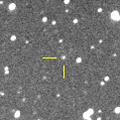
|
Now it is 17.2 mag (Oct. 12, Toshihiko Ikemura, Hirohisa Sato). It was observed at 17 mag in 2019. In 2020, it is observable at 17.5 mag in good condition from summer to autumn.
Date(TT) R.A. (2000) Decl. Delta r Elong. m1 Best Time(A, h)
Oct. 31 0 25.05 -7 55.2 2.969 3.815 143 17.9 21:44 (180, 63)
Nov. 7 0 22.43 -7 47.5 3.043 3.823 136 18.0 21:14 (180, 63)
|

|
It brightened up to 13.2 mag from spring to autumn in 2019 (June 30, Thomas Lehmann). Now it is fading slowly. It has already faded down to 16.9 mag (Oct. 12, Toshihiko Ikemura, Hirohisa Sato). In the Southern Hemisphere, it stays observable for a long time. In the Northern Hemisphere, it stays low for a long time.
Date(TT) R.A. (2000) Decl. Delta r Elong. m1 Best Time(A, h)
Oct. 31 22 13.93 -25 10.7 4.555 4.953 108 17.9 20:01 (147, 78)
Nov. 7 22 11.98 -24 16.7 4.706 4.994 101 18.0 20:11 (123, 72)
|

|
New comet discovered in the images of SOHO spacecraft. It approached to Sun down to 0.09 a.u. on Aug. 8, and it brightened up to 3 mag. Appearing in the morning sky, but it must be fainter than 18 mag.
Date(TT) R.A. (2000) Decl. Delta r Elong. m1 Best Time(A, h)
Oct. 31 11 14.55 -5 7.1 2.575 2.030 46 19.1 3:26 (267, 13)
Nov. 7 11 18.84 -5 48.6 2.600 2.146 52 19.4 3:17 (266, 16)
|
|
![]()
 84P/Giclas
84P/Giclas C/2018 U1 ( Lemmon )
C/2018 U1 ( Lemmon ) 17P/Holmes
17P/Holmes 162P/Siding Spring
162P/Siding Spring (3200) Phaethon
(3200) Phaethon C/2019 T2 ( Lemmon )
C/2019 T2 ( Lemmon ) C/2019 T4 ( ATLAS )
C/2019 T4 ( ATLAS ) C/2019 K7 ( Smith )
C/2019 K7 ( Smith ) C/2018 F4 ( PanSTARRS )
C/2018 F4 ( PanSTARRS ) C/2020 N1 ( PanSTARRS )
C/2020 N1 ( PanSTARRS ) C/2017 B3 ( LINEAR )
C/2017 B3 ( LINEAR ) C/2019 T3 ( ATLAS )
C/2019 T3 ( ATLAS ) C/2017 U7 ( PanSTARRS )
C/2017 U7 ( PanSTARRS ) C/2020 H4 ( Leonard )
C/2020 H4 ( Leonard ) P/2020 U1 ( Lemmon )
P/2020 U1 ( Lemmon ) C/2020 R4 ( ATLAS )
C/2020 R4 ( ATLAS ) 11P/Tempel-Swift-LINEAR
11P/Tempel-Swift-LINEAR 397P/2020 M2 ( Lemmon )
397P/2020 M2 ( Lemmon ) C/2019 O3 ( Palomar )
C/2019 O3 ( Palomar ) 257P/Catalina
257P/Catalina 115P/Maury
115P/Maury 173P/Mueller 5
173P/Mueller 5 277P/LINEAR
277P/LINEAR 304P/Ory
304P/Ory C/2016 M1 ( PanSTARRS )
C/2016 M1 ( PanSTARRS ) (6478) Gault
(6478) Gault C/2020 M5 ( ATLAS )
C/2020 M5 ( ATLAS ) C/2019 E3 ( ATLAS )
C/2019 E3 ( ATLAS ) 178P/Hug-Bell
178P/Hug-Bell 254P/McNaught
254P/McNaught C/2020 R7 ( ATLAS )
C/2020 R7 ( ATLAS ) 215P/NEAT
215P/NEAT C/2018 A6 ( Gibbs )
C/2018 A6 ( Gibbs ) C/2020 P4 ( SOHO )
C/2020 P4 ( SOHO )![]()















































